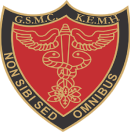

KING EDWARD MEMORIAL HOSPITAL
SETH GORDHANDAS SUNDERDAS MEDICAL COLLEGE
बृहन्मुंबई महानगरपालिका रुग्णालय
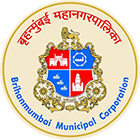


KING EDWARD MEMORIAL HOSPITAL
SETH GORDHANDAS SUNDERDAS MEDICAL COLLEGE
बृहन्मुंबई महानगरपालिका रुग्णालय

Seth Gordhandas Sunderdas Medical College and King Edward VII Memorial Hospital, Bombay
(This article first appeared in the National Medical Journal of India in January 1988 and is reprinted with permission. Prof. Sunil K. Pandya retired as Head of the Department of Neurosurgery at these institutions in March 1998).
Modern medicine was introduced to India by the Europeans. With the foundation of the Grant Medical College in Bombay in 1845 the ‘native citizens’ of the presidency were given an opportunity to study western medicine from some outstanding teachers. The college soon gained a world-wide reputation and its founder-principal, Dr Charles Morehead, was invited to help the University of London in formulating its programme for medical education.
Towards the end of the century the old order represented by Sir Robert Grant, Dr Charles Morehead and Sir Jamsetjee Jejeebhoy was replaced by officers of the Indian Medical Service (IMS) who, far from encouraging the best talent of the college, maintained their hold on the prestigious professorial posts. After much hesitation, a few non-clinical professorial posts were opened to non-IMS Indians and Dr Y. G. Nadgir was the first to be appointed to a chair (Anatomy). The fact that an IMS ‘ officer would be professor ofmateria medica one year and teach obstetrics and gynaecology the next underlined the unwillingness of the authorities to give opportunities to capable Indians.
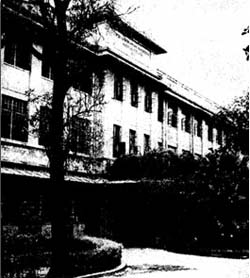
Nationalist Indians strove to correct this imbalance. Among them was Dr K. N. Bahadurji, the first Indian to obtain the coveted M.D. degree of the University of London. When he was denied the post of Professor of Medicine at the Grant Medical College (an IMS officer holding only the Licentiate of the Royal College of Physicians diploma (LRCP) being appointed instead) he advocated the establishment of a new medical college, staffed by Indians, that would break the monopoly of the IMS. He placed the idea before Sir Pherozshah Mehta – the lion of Bombay – and other members of the Bombay Municipal Corporation. Dr Bahadurji died on 15 August 1898 before his plans could materialize.
GENESIS AND FOUNDATION In 1907, under the Police Charges Act, the work of medical relief within the city of Bombay was entrusted to the Municipal Corporation. In 1909, an ad hoc committee of the corporation decided that ‘the time had come for the Seth Gordhandas Sunderdas Medical College in 1925 Photo by Keshav M. Godhia to be associated with the proposed hospital. At the instance of Sir Pherozshah Mehta, the donors also insisted \ that the professors and teachers to be employed should I all be properly qualified independent Indian gentlemen I not in government service. The Municipality approached the Bombay Medical Union for a detailed scheme for the organization of the medical college and hospital. Dr. Jivraj Mehta, just returned from London after obtaining an M.D.degree, was approached by the union. He suggested a radical departure from the traditional design of teaching hospitals in India where isolated blocks housed separate departments. Dr. Mehta proposed that the entire medical college be housed in one large building and the hospital (including the out-patient block) in a separate building. This would facilitate co-ordination between the various departments. The two buildings were to be interconnected by covered corridors so that patients, students and staff could easily go from one building to another during heavy monsoon rains. (The Seth G.S.Medical College and K.E.M. Hospital were the first multistoreyed institutions of their kind. The K.E.M. Hospital was the first Indian hospital housing the out-patient department within the main hospital building).
The plans were submitted to W.A.Pite who had designed the Kings College Hospital in London and was then a leading authority on hospital construction. The local architect was G.Wittet. In those days it was thought that if an architect happened to be an Englishman, he was not only a fit person to draw up plans for a hospital but also to select its equipment. Wittet drew up a long list of equipment to be imported from England, including even ordinary beds for the wards, lockers and mobile screens.
The equipment committee (consisting of Dr Rustom Cooper, Dr P.T.Patel and Col.Hamilton) insisted on obtaining most items from Bombay. Wittet strongly expressed his resentment but was disregarded. When the hospital and the college were formally inaugurated on 22 January 1926, Wittet was presented a gold cigarette cas 5* by the Governor of Bombay, Sir Leslie Orme Wilson, in appreciation of his services. In the very first week, however, a large piece of the plastered ceiling of the operation theatre came down and within the first fortnight, the tiled floor cracked! The total cost of construction of the hospital was Rs.2,527,699 and that of the college Rs 1,364,574.
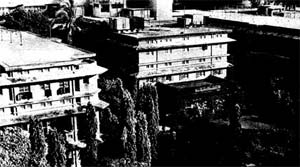
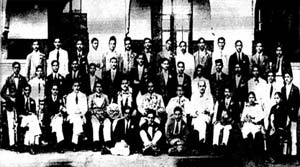
In making the first appointments to the staff, the Municipal Corporation was largely guided by Dr G. V. Deshmukha very active member of the corporation and also a big noise in the profession (Cooper). Dr Jivraj Mehta was elected Dean of the college and hospital. The first batch of teachers included Dr.M.D.D.Gilder, Dr P.C.Bharucha, Dr A.S.Erulkar, Dr P. T. Patel, Dr G. V. Deshmukh, Dr.R.N.Cooper, Dr V.L.Parmar, Dr.N.A. Purandare, DrV.R.Khanolkar and DrB.B.Yodh,who, according to Dr Jivraj Mehta, were individuals of the highest capability and deepest integrity. There was a great bond of striving towards a common aim – ensuring a brilliant success for these institutions. Remember, these were the first medical institutions in the country staffed by Indians at the professorial and other levels and there was a great sense of pride in all of us.
To ensure smooth working, some departures from accepted policies were instituted. It was the usual practice in hospitals to have surgeons in order of seniority. The senior surgeon became, ipsofacto, professor of surgery. The surgeons at the K.E.M. Hospital decided differently. It was resolved to drop the high sounding title of professor and call the surgeons just lecturers. It must be said to the credit of Drs G. V. Deshmukh and A. P.Bacha that, though they had a senior standing in the profession, they agreed to this arrangement. This plan was accepted by all the other departments and has been responsible for the great fellow – feeling that has always prevailed. Many heartaches and petty jealousies were thus averted.
Part of the success was also due to the extraordinary qualities of Dr.Jivraj Mehta. 1 would come over to the hospital in the middle of the night keep my car outside the hospital compound so that no one knew in advance of my presence and moved about the hospital, entering the wards through the servants’ staircase to check for myself that no one on duty misused his time. I preferred using the small, winding staircases near the toilet blocks so that I could check on the sanitary facilities. Call books were checked regularly and doctors not attending within a reasonable period were disciplined. I would taste the patient’s food from time to time and walk into the student’s hostel and resident’s quarters at midnight to see how they lived and worked.
The Seth G.S. Medical College, the twelfth medical college in the country, opened its doors on I June 1925 to 46 students, six of them women. The formal opening followed the next year and it was affiliated to the University of Bombay. The hospital, with 125 beds, started admitting patients on 15 January 1926.
Both the medical College and the hospital quickly gained a reputation and patients were attracted in large numbers. The demand for more beds led to a progressive expansion of the hospital. Table I shows the growth of hospital services.
As most patients are poor, the Municipal Corporation tried to provide hospital services free of charge. But increases in costs over the past decades have made it necessary to recover some of the expenses from those who could afford to pay.
The achievements of the institutions that hit the national headlines or won awards such as the Lasker or Padma Bhushan, include the contribution on Rauwolfia serpentina by Dr Rustom Jal Vakil, the first heart transplant in India by Dr P.K.Sen and the first documented Indian test-tube baby by Dr Indira Hinduja.
The major contribution was made towards the development of a good system of undergraduate and postgraduate education, the creation of a system where the poor can obtain good and free medical care and the creation of an ethos of service.
With limited financial resources it is becoming difficult to meet everyday requirements and it has not been financially possible to acquire modern equipment such as a computerized tomographic scanner. The staff feel discriminated against in the allotment of fellowships, equipment gifted by foreign governments and grants from international health organizations. Moreover, because of commercialism there is a danger of our work ethos being eroded. The harmony among members of the staff is under strain resulting in the neglect of patient care, student education and research.
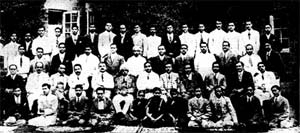
King Edward VII Memorial Hospital – The first batch of students with members of the staff, 1928
